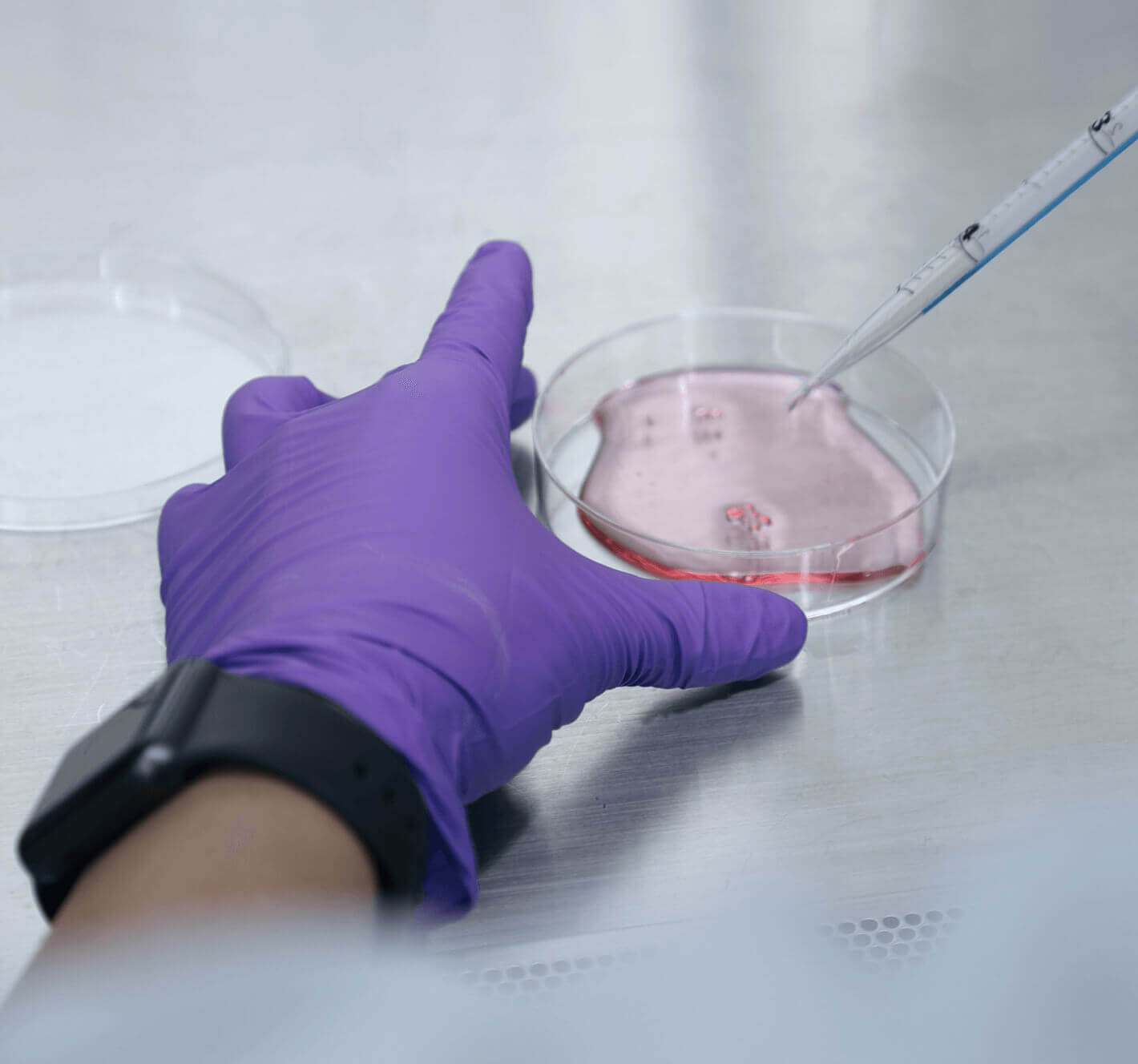Patients& families
- Home
- Patients & families
Putting people first
Our mission is simple – to give people living with complex disease hope of a better future. We work closely with patients, families and physicians to inform our research and develop treatments that make a real difference.

Our research
For us, treatments should do more than just treat a disease. They should positively impact a patient’s quality of life. That means minimal to no side effects and efficacy that translates to a real-life improvement, like reducing hospital visits or enabling patients to do daily activities.
But achieving this requires dedication. It is why we focus specifically on addressing these challenges, developing unique therapies in areas lacking options that are either safe, effective or both. We conduct our own clinical trials to ensure all our solutions meet the highest standards and genuinely benefit the patients we serve.


Better outcomes for everyone
“At JCR, we think that innovation starts with listening to patients, their families and their physicians. Their voices and lived experiences are what guide our research and development process, using them to deliver new and more effective treatment options for rare diseases like mucopolysaccharidoses. Equally, we recognize the importance of partnering with patient community and advocacy groups to spread awareness, and spark conversations globally about lysosomal storage disorders, including what they are and how a rare and challenging disease impacts families.”
Takayo Egawa
Senior Executive Officer, Director, International Affairs & Patient Advocacy
Therapy areas
We are actively exploring treatments for a range of therapy areas. Our work has been focused on designing regenerative solutions, as well as platforms that deliver medicines exactly where they need to be.
We are developing treatments for rare diseases, including therapeutic products for mucopolysaccharidosis type II (Hunter syndrome), MPS I, MPS IIIA, MPS IIIB and Fabry disease.
We offer therapeutic solutions for growth hormone deficiency and short stature.
We are advancing treatments for acute graft-versus-host disease with cutting-edge regenerative medical products.
Two therapeutic products indicated for the treatment of renal anemia.
Breaking the barriers of central nervous system (CNS) disease
J-Brain Cargo® technology
The blood-brain barrier (BBB) serves as a protective shield, preventing harmful substances and pathogens from entering and causing damage to the brain. But this same barrier creates significant challenges when treating lysosomal storage disorders (LSDs) as treatment cannot get in.
Breaking the barriers of central nervous system (CNS) disease
J-Brain Cargo® technology
J-Brain Cargo® is a breakthrough technology that enables us to deliver treatments directly to the brain, overcoming the barrier that usually blocks medications from reaching the central nervous systems. It is the world’s first approved product that has real potential to treat brain disorders we once thought were untreatable.
Working with patients
We want to make sure everyone has access to the solutions they need most. It is why we conduct our own clinical trials, working closely with patients and their families to ensure our treatments are safe, effective and provide tangible benefits.


Our patients’ safety is our priority, which is why all of our clinical trials meet the global standards required by regulators, taking extra precautions to drug safety before starting human trials.
You can read more about how we protect patients on clinical trials and beyond in our access policy.
MPS II awareness:The Next Frontier
JCR Pharmaceuticals presents a new film in The Next Frontier series, highlighting the story of a family impacted by mucopolysaccharidosis type II (MPS II or Hunter syndrome). The video shares the emotional and medical challenges faced by those living with this rare, life-threatening condition and underscores the importance of biotechnology in improving awareness and developing future treatments. The film premiered during the BIO International Convention 2025.
Clinical trialsin progress
The success of J-Brain Cargo® is just one example of the type of innovation we want to bring to patients. We have a wide range of clinical trials still in progress, with new developments on the verge of being approved for patients.
Trial Phase 3
Hunter syndrome (MPS II)
The global Phase 3 study plans to investigate the effects of JR-141 on the CNS and somatic disease burden in neuronopathic and attenuated subjects with MPS II.
Trial Phase 1/2
Hurler syndrome (MPS I)
The Phase 2 trial aims to explore the efficacy of JR-171 on central nervous and somatic symptoms of MPS I.
Trial Phase 3
Pediatric growthhormone deficiency
The Phase 2 study of JR-142 in Japan aims to evaluate the efficacy and safety of once-weekly administration of JR-142 in pediatric patients with growth hormone deficiency.
Trial Phase 1/2
Sanfilippo syndrometype A (MPS IIIA)
The Phase 1/2 single-arm study aims to assess the safety profile, biological effect, and pharmacokinetic profile of JR-441 in patients aged 1 to under 18 years with MPS IIIA. Preclinical studies have demonstrated the potential of JR-441 to address CNS-related symptoms associated with MPS IIIA.
Trial Phase 1/2
Sanfilippo syndrometype B (MPS IIIB)
The Phase 1/2 open-label study aims to evaluate the safety, tolerability, and preliminary efficacy of JR-446 for the treatment of individuals with MPS IIIB, for which there is currently no approved treatment.
What are clinical trials?
A clinical trial is a research study where new treatments, drugs or therapies are tested on people to evaluate their safety, efficacy and potential benefits. They help determine how these solutions perform in real-world conditions and if they are safe enough for widespread use, typically progressing through several stages before approval.
Participants
A small number of people
What is evaluated
- Safety of the study drug, including any risks
- Phase 1 may help determine the best dose of the study drug for future clinical studies and may include healthy volunteers
Focus on safety (risks)
Participants
A small number of people
What is evaluated
- The efficacy, or benefits of a potential treatment
Focus on safety (risks) & efficacy (benefits)
Participants
A larger group of people
What is evaluated
- Confirming that a potential treatment provides real benefit and reasonable safety risk profile in a large group
- Next, a drug is typically submitted to a government health agency for review, such as the FDA
Focus on safety (risks) & efficacy (benefits)
After marketing approval
- Additional studies test the treatment for long-term efficacy and safety risk profile
Focus on safety (risks) & efficacy (benefits)
You may also come across other terms related to clinical studies. Please note this information is for illustrative purposes only – study design can vary.
Placebo
A placebo is a substance made to look like medicine being tested but doesn’t have any active ingredients. It is used in clinical trials to help researchers see if the treatment is working compared to no treatment at all.
Randomized
The process of randomly assigning participants to different treatment groups. For example, one person receives the drug on trial, and another is given a placebo. This helps to make sure results are fair, unbiased and valid.
Double-blind
A double-blind study is when neither patients or researchers know who is receiving the real treatment and who is being given the placebo. This helps to make sure results are objective and fair.
Open-label
An open-label study is where everyone involved knows the treatment being given, including researchers, clinicians and participants. They are often used to monitor the long-term safety and efficacy of a treatment.
Get involved
We understand the importance of finding effective treatments, especially when your options are limited. That is why we invite patients and families to take part in our clinical trials. Your involvement can help shape the future of medical treatments, and as well as your own.